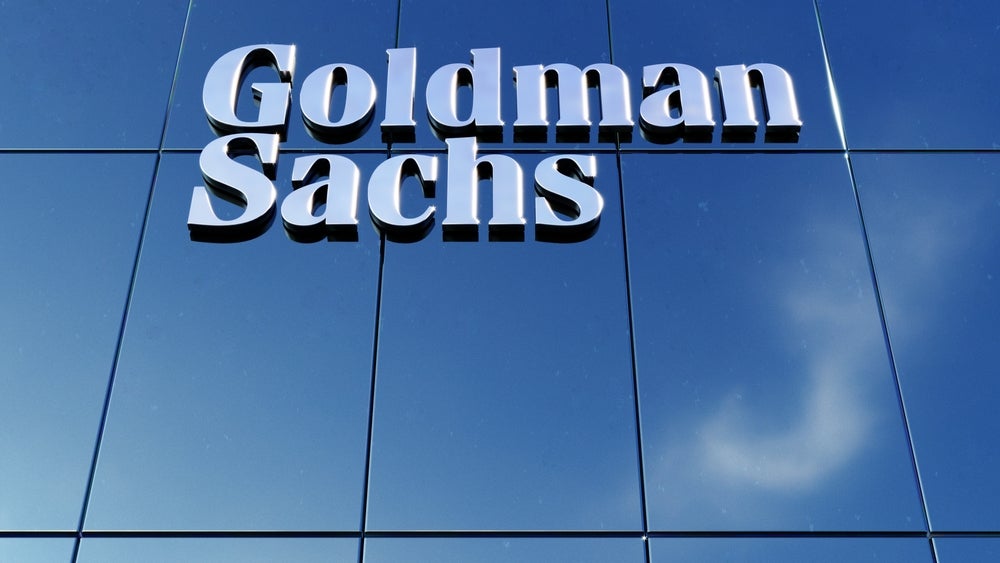banking at Malaysia’s RHB Bank, tells Dan Jones that the bank’s significant
card partnership with UK-based Tesco, the world’s third-largest
retail chain, should help his bank boost retail profits and
cross-selling opportunities in 2009 and
beyond.
 Malaysia’s leading banks
Malaysia’s leading banks
have reported a mixed set of figures for the financial period
ending 31 December 2008. Some, such as CIMB and Maybank, the latter
of which reported on an interim basis, have seen group profits
fall. Others, such as Public Bank and RHB Bank, enjoyed relatively
healthy growth on the back of solid retail banking
performances.
RHB Bank, in particular, has a range of new
products and services launching in 2009, the most high profile of
which is a credit and debit card tie-up with global supermarket
chain Tesco.
The Tesco-RHB Credit Card and Tesco-RHB Debit
Card, launched in January 2009 in conjunction with Visa, have
achieved initial success, with take-up roughly matching RHB’s
internal expectations for the product.
“We’re on track; we’ve done two months and
we’ve issued about 40,000 cards, both credit and debit. We want to
do about 240,000 cards in the first year, 120,000 of each,” Renzo
Viegas, head of retail banking at RHB, told RBI.
The launch of the cards comes at a time when
RHB’s rivals are also beginning to turn their attentions to the
sector, often in a manner similar to that seen at RHB.
How well do you really know your competitors?
Access the most comprehensive Company Profiles on the market, powered by GlobalData. Save hours of research. Gain competitive edge.

Thank you!
Your download email will arrive shortly
Not ready to buy yet? Download a free sample
We are confident about the unique quality of our Company Profiles. However, we want you to make the most beneficial decision for your business, so we offer a free sample that you can download by submitting the below form
By GlobalDataDomestic hypermarket Giant, for example,
launched a co-branded credit card with Citibank in Malaysia in June
2008, while market leader Maybank announced the roll out of a
Singapore Airlines KrisFlyer American Express gold credit card in
February 2009.
Co-branded cards have obvious attractions for
domestic firms looking to boost their cachet via a partnership with
an international organisation and for foreign institutions seeking
greater market penetration.
The sales figures also add up: co-branded
credit cards typically generate expenditure 30 to 35 percent higher
than other cards, according to Maybank’s consumer banking head of
senior executive vice-president, Lim Hong Tat.
Viegas points to the more wide-ranging
attractions of his bank’s own offering when comparing the Tesco
cards to those of its competitors.
“I think the Tesco RHB proposition is richer,
because we offer a combination of both cash rebates [also available
with Giant-Citibank cards] and Tesco Clubcard points. On the debit
side, there is no co-branded debit card in the market, so this is a
first in terms of agreements with hypermarkets.”
Government interest
While banks’ interest in credit card
revenues has increased in recent times, so too has the Malaysian
government’s own attention turned to card charges.
“The background is that Malaysia’s credit card
interest rates are some of the lowest in the world in terms of the
maximum caps. But in a difficult economy you are always under
pressure for interest rates to be reduced,” said Viegas.
In July last year the Malaysian government
removed the flat 18 percent cap on credit card rates and introduced
a three-tiered system. Those meeting payment deadlines for 12
months paid a 15 percent interest rate; those missing up to two
payments paid a 17 percent rate; those missing more than two
payments paid an 18 percent rate.
Each cap will fall again as of 31 March 2009,
with the tier 1 rate falling from 15 percent to 13.5 percent. For
Viegas, the moves put the banks in a challenging position.
“As of right now it’s still sustainable but
any further cut in interest rates would be a challenge for the
banking industry and lead to a tightening of credit,” he said.
“[All banks are] in dialogue with the regulators, and we are trying
to find a solution. The regulator is moving to risk-based pricing,
but at the moment they are the ones prescribing it. The banks are
saying ‘leave this to us’.”
Credit cards are not, however, the only
product which RHB is seeking to leverage in 2009. The partnership
with Tesco, for instance, has also led to RHB employees being
present in the UK-headquartered supermarket’s 30 Malaysian stores
(Tesco has established grocery stores in 13 other countries outside
of the UK including Poland (opened in 1995), South Korea (1999),
Japan (2003), Turkey (2003), China (2004) and the US (2007)).
The bank will install kiosks across all 30
outlets in April and May in order to formalise its in-store
presence.
The Tesco-RHB debit cards are also
understandably seen as a key to improved deposit-gathering. RHB has
almost two million current and savings accounts in its retail
division, and opens around 20,000 new accounts each month.
Viegas hopes that the debit card initiative
will increase this figure; the banker acknowledges that January saw
a slow take-up of the product but said that strong figures from
February and March have pulled performance back in line with
expectations.
“As a result of the partnership you’ll have a
lot of people who have a lot of cash but never had a savings
account becoming interested in our services,” said Viegas. RHB is
also looking to secure payroll business from large corporations as
a means of boosting deposit growth.
Cross-selling
opportunities
The cross-selling opportunities
arising from such initiatives will be extended into the wider bank,
said Viegas. RHB intends to introduce a suite of four or five
products for the mass market, marketed as being simple and
convenient, in the third quarter of 2009. He cites products such as
a recurring savings deposit as featuring in the package.
“On top of this, the insurance market is not
as penetrated as some markets so there is plenty of opportunity in
Asia. We will be focusing on life insurance,” said Viegas,
referring to another recent RHB tie-up, signed with insurance group
American International Assurance (AIA) in March 2009.
The 10-year alliance will focus on the selling
of AIA products through RHB’s branch network.
The deal is reminiscent of an earlier tie-up
involving a Malaysian institution and an international insurer: in
November 2007 Public Bank announced a deal to exclusively sell ING
insurance products through its branches.
That deal, which saw Public Bank commence
selling products in January 2008, has already reaped rewards: the
bank generated a total of MYR463 million ($128 million) in premiums
in 2008 from ING bancassurance products versus a target of MYR262
million.
Public Bank is targeting an annual compound
growth rate of 18.9 percent with a view to generating MYR1.3
billion a year from ING products by 2017.
Revenue from the ING partnership contributed
to a strong 2008 performance at Public Bank (see table),
which posted full-year group pre-tax profit of MYR3.38 billion, a
rise of 12.48 percent.
RHB saw its own group pre-tax profit rise by
27.7 percent to MYR1.05 billion, though retail profit before tax
and unallocated expenses remained roughly flat at MYR808
million.
Looking to the future
A key focus going forward, said
Viegas, will be on expanding distribution and sales through
alternate channels.
“We’ve hired someone to run this business.
We’re revamping our entire internet platform, which should be ready
by September, and we’re expanding our off-premises ATMs,” Viegas
explained.
“We will also enter into other partnerships
similar to the Tesco deal so that we can see our products in other
stores.”
The RHB branch network will remain largely
static over the course of the year, in keeping with a worldwide
trend, with both RHB Bank proper and its flourishing Islamic
subsidiary, RHB Islamic Bank, adding only a handful of outlets
between them.
“Last year we opened five new conventional
branches. This year we plan to open three conventional branches,
and I think our Islamic branch will open five to six, but we don’t
see the need to expand aggressively,” Viegas commented.
Mobile banking, however, is not yet in the
pipeline. Viegas noted that “a couple of banks in Malaysia” had
launched such services but said any RHB rollout would not be until
the launch of its new internet platform in September 2009.
Asked whether the Tesco deal would be extended
to RHB Islamic Bank products, Viegas was open minded.
“We haven’t done a co-branded Tesco deal for
Islamic, but we’d be open to consider that a few months down the
line, depending on if they see the need for it.
“In some parts of the country there will be
more desire for such products, especially on the East coast. I
think both of us would be open to it.”
|
Country survey |
||||||||
|
Malaysia – performances of |
||||||||
|
Group pre-tax profit |
y-o-y |
Retail pre-tax profit |
y-o-y |
Retail loans (MYRbn) |
y-o-y |
Retail deposits |
y-o-y |
|
|
Maybank(1) |
1.84 |
-10 |
943 |
n/d |
59 |
5.9 |
99.2 |
13.6 |
|
Public Bank(2) |
3.38 |
12.48 |
2,730 |
24 |
77.7 |
17 |
69.7 |
16.8 |
|
CIMB(2) |
2.72 |
-26 |
705 |
n/m |
48.1 |
16.4 |
36.5 |
19.2 |
|
Hong Leong Bank(1) |
0.66 |
20 |
n/d |
n/d |
24 |
15.4 |
32.1 |
4.84 |
|
RHB(2) |
1.05 |
27.7 |
808(3) |
0.8 |
26 |
10.7 |
24.6 |
5 |
|
n/d=not disclosed; n/m=not meaningful. (1) |
||||||||







